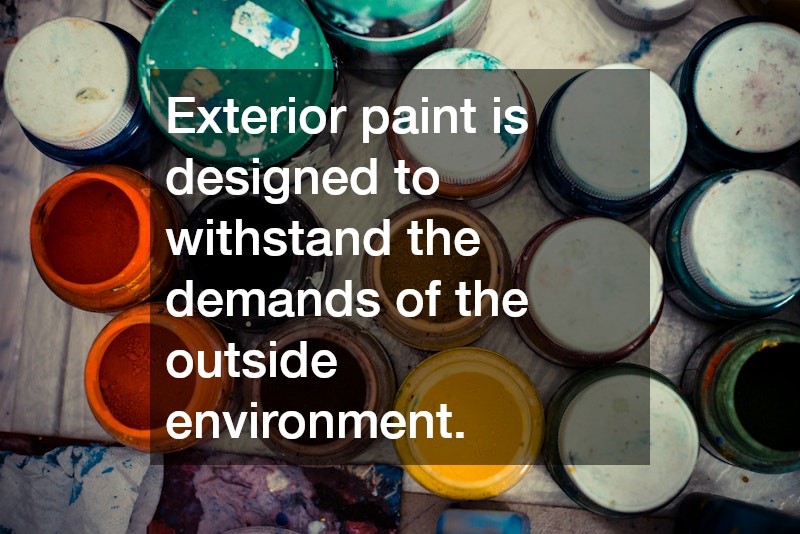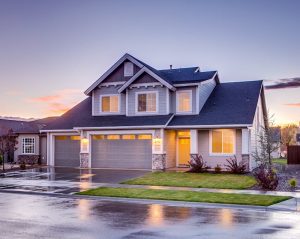When it comes to selecting the right paint for your next project, the range of options can be overwhelming. Exterior paint, in particular, requires careful consideration given its exposure to elements such as UV rays, rain, and fluctuating temperatures. This article will guide you through the process of choosing the most suitable exterior paint, ensuring durability and aesthetic appeal for your project.
Understanding the Basics of Exterior Paint
Exterior paint is designed to withstand the demands of the outside environment. Unlike interior paint, it must be durable enough to combat weathering and fading over time. Knowing how exterior paint differs from other types is the first step in making a well-informed decision for your project.
The main components in exterior paint include resin, pigment, additives, and solvent. Resins bind the pigment to the surface, while additives can enhance specific properties such as mildew resistance or increased sunlight protection. The choice of solvent affects the drying time and ease of application, two critical factors in achieving a professional finish.
With a variety of finishes available, understanding the differences between flat, satin, and gloss can help you meet your project’s aesthetic requirements. While flat finishes may hide imperfections, gloss finishes provide a shinier, more reflective surface. Thus, your choice should depend on the desired look and the surface you’re working with.
Types of Exterior Paint and Considerations
Common types of exterior paint include oil-based, latex, and acrylic variations. Each type has its set of advantages and drawbacks, which should be weighed according to the specific conditions of your project. Oil-based paints are renowned for their durability but may require longer drying times and additional cleanup efforts.
In contrast, latex paints offer easier application and faster drying times, making them a popular choice for DIY enthusiasts. Acrylic paints, known for their superior adhesion and color retention, are particularly suitable for areas exposed to direct sunlight. Considering these factors is essential in aligning your project needs with the properties of the paint.
Before making a selection, it’s useful to assess the environmental conditions of the area where the paint will be applied. Climate, surface material, and even local building codes can influence the type of exterior paint that will be most effective. For example, homes in humid areas may benefit from mildew-resistant formulas.
Application Techniques and Surface Preparation
A successful painting project begins with proper surface preparation. Cleaning and priming the surface ensures that the paint adheres well and lasts longer. Neglecting these initial steps can lead to peeling or bubbling, compromising the longevity and appearance of the paint.
Choosing the right tools is equally important. While brushes and rollers are common, spray application may be ideal for larger, more intricate surfaces. Each method has its own set of benefits; for example, rollers cover large areas efficiently, whereas brushes allow for precision work in smaller sections.
Application techniques vary depending on the type of paint and the specific surface characteristics. Strokes should be even, and multiple coats may be necessary to achieve the desired coverage and vibrancy. Following the manufacturer’s instructions regarding recoating times prevents application issues in the future.
Cost and Value Considerations
While the cost of paint varies widely, investing in high-quality exterior paint can provide long-term savings. Premium paints tend to offer better coverage, necessitating fewer coats and reducing labor costs. Moreover, their enhanced durability means that repainting will be required less frequently.
A high-quality exterior paint can withstand environmental stressors, preserving the investment you’ve made in the project. This results in not only maintaining but potentially increasing the property’s value, adding to the overall ROI. Balancing upfront costs with the benefits of longevity can guide you towards making the most fiscally sensible decision.
Conduct thorough research into paint warranties and guarantees, as these can offer additional assurance of the paint’s performance. Many manufacturers back their products with extensive warranties, ensuring buyer confidence. Understanding these aspects can prevent unexpected expenses and unnecessary hassles in the long term.
Choosing the right exterior paint for your next project involves considering numerous factors such as the type of paint, the environmental conditions, and the desired finish. By understanding the different types of paints and their respective benefits, you can make a decision that will ensure both durability and curb appeal. With the right preparation, technique, and consideration of cost, your project is bound to achieve a professional and lasting result.











